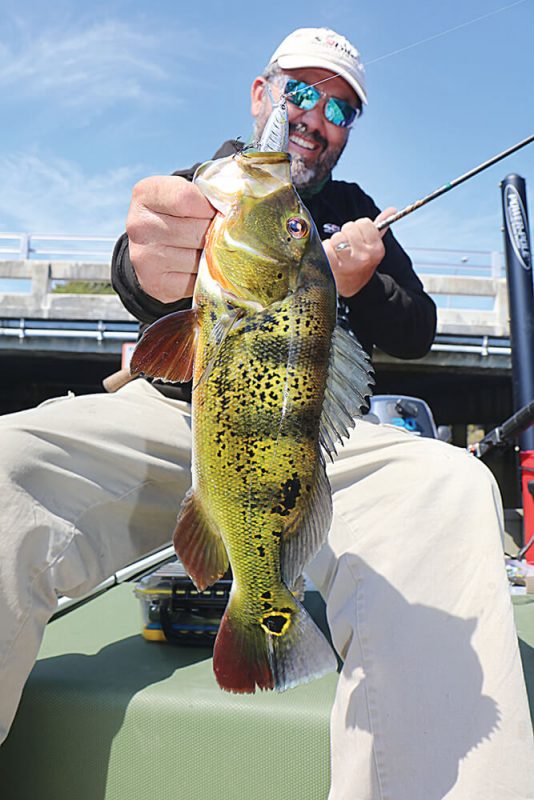Accidents happen while fishing. A treble hook impaling your hand while you’re trying to remove the lure from a thrashing ladyfish is one common example. If you fish long enough, you are bound to be hooked at one time or another.
With limbs or digits, getting hooked is a relatively minor incident. A hook in the eyeball is a life-changing event. I have had several close encounters when lures came way too close to my face. It has convinced me to be cautious. It has taught me to hold the rod at an angle so the lure won’t fly back at me if it suddenly pops free from a fish’s mouth or a snag.

One of these chilling experiences happened a few months ago when my good friend Alessandro came from Italy to visit me in Florida. We went out early to a spot where snook and small tarpon had been biting topwater baits before the sun rose. I coached him to retrieve his Sebile Splasher with the rod tip close to the surface, and to set the hook sideways to keep the lure from flying at us on a missed hook set.
It’s easy to coach, but when a tarpon rolls on your bait, the blood boils and coaching flies out the window. Alessandro reared back with a tremendous hook set, and that Splasher with its two big treble hooks flew straight at me, just a few inches from my eyes.
On another occasion, I was trolling inlets on the west coast of Africa. Because of the location we were fishing, the lures were close to the boat. We were pulling a big shad crankbait just 20 feet behind the boat. I spotted a drifting branch and knew the big crankbait was about to snag it. I told my client not to set the hook when the tip bent, but he grabbed that rod and gave it a powerful jerk. That 5-inch-long lure flew at my head with so much force that four of the six treble hooks embedded deeply into my hand. I was lucky I had time to get my hand in front of my face. It was bad, but at least they didn’t get my eyes. We were 10 hours from the nearest hospital.
These anecdotes are examples of why I always wear glasses on the water. Good reinforced, impact-resistant polarized glasses—such as the Rhinolens line from Flying Fisherman—shield your eyes from hooks as well as the sun. Even in super low-light conditions, I wear bright yellow polycarbonate shades made for shooters.
We only have two eyes, so I will not trust the protection of mine to cheap glasses. Safety first, my friends… in fishing and loving!
Patrick Sebile is the owner and lure designer of Sebile Innovative Fishing (www.sebile.com).